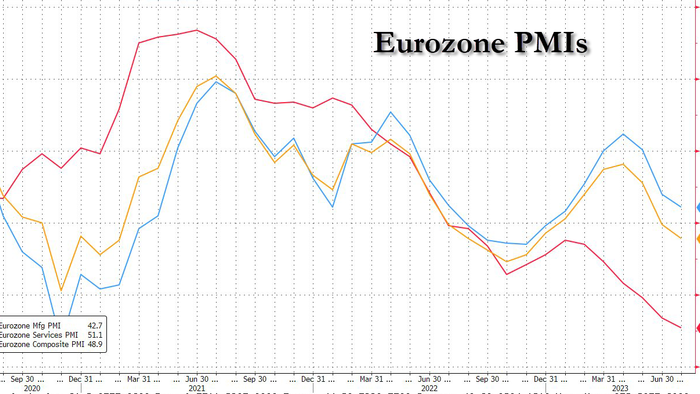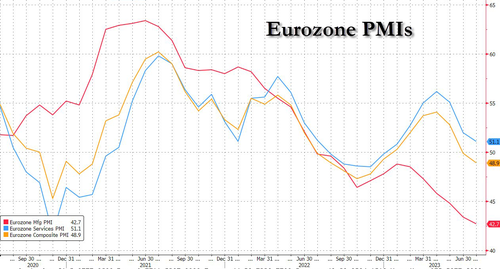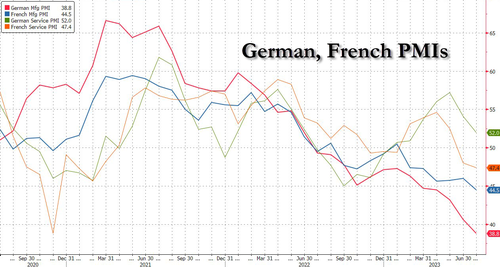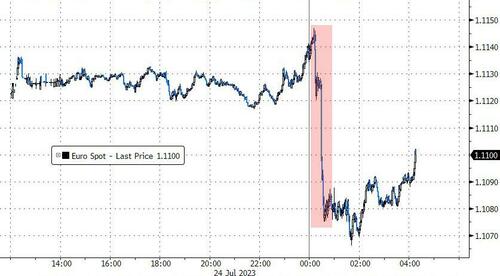


The eurozone’s downturn deepened at the start of the third quarter as the region's composite flash PMI decreased by 1.0pt to 48.9, below consensus expectations, on the back of a broad-based decline across sectors., with weakening demand triggered the steepest decline in manufacturing orders since 2009, while the services sector suffered its first drop in orders for seven months.
“The eurozone economy will likely move further into contraction territory in the months ahead, as the services sector keeps losing steam,” said Cyrus de la Rubia, chief economist at Hamburg Commercial Bank, adding that there was “an increased probability” of the German economy sliding into recession in the second half of this year.
The composition of the July report showed a broad-based moderation across new orders, new export orders, backlogs, and employment. Firms' future output expectations also declined further, reflecting a more pessimistic outlook in both sectors. Turning to price pressures, both input and output price components continued to decline in both sectors, although the pace of this moderation remains slower and the level of the these component series remains much higher in the services sector.
Across Euro area regions:
Goldman sees see three main takeaways from today's data.
“Given what could be a mildly hawkish Fed event risk on Wednesday and the prospect of the ECB less than wholeheartedly backing the idea of a follow-up September rate hike, we see some downside risks to EUR/USD this week,” Chris Turner, head of fx strategy at ING. wrote in a note, forecasting EUR/USD to weaken to 1.1050
And sure enough EURUSD has started to fade...
However, the central bank has said in recent weeks it is concerned high wage growth and rising services prices could keep inflation above its 2 per cent target for too long.



